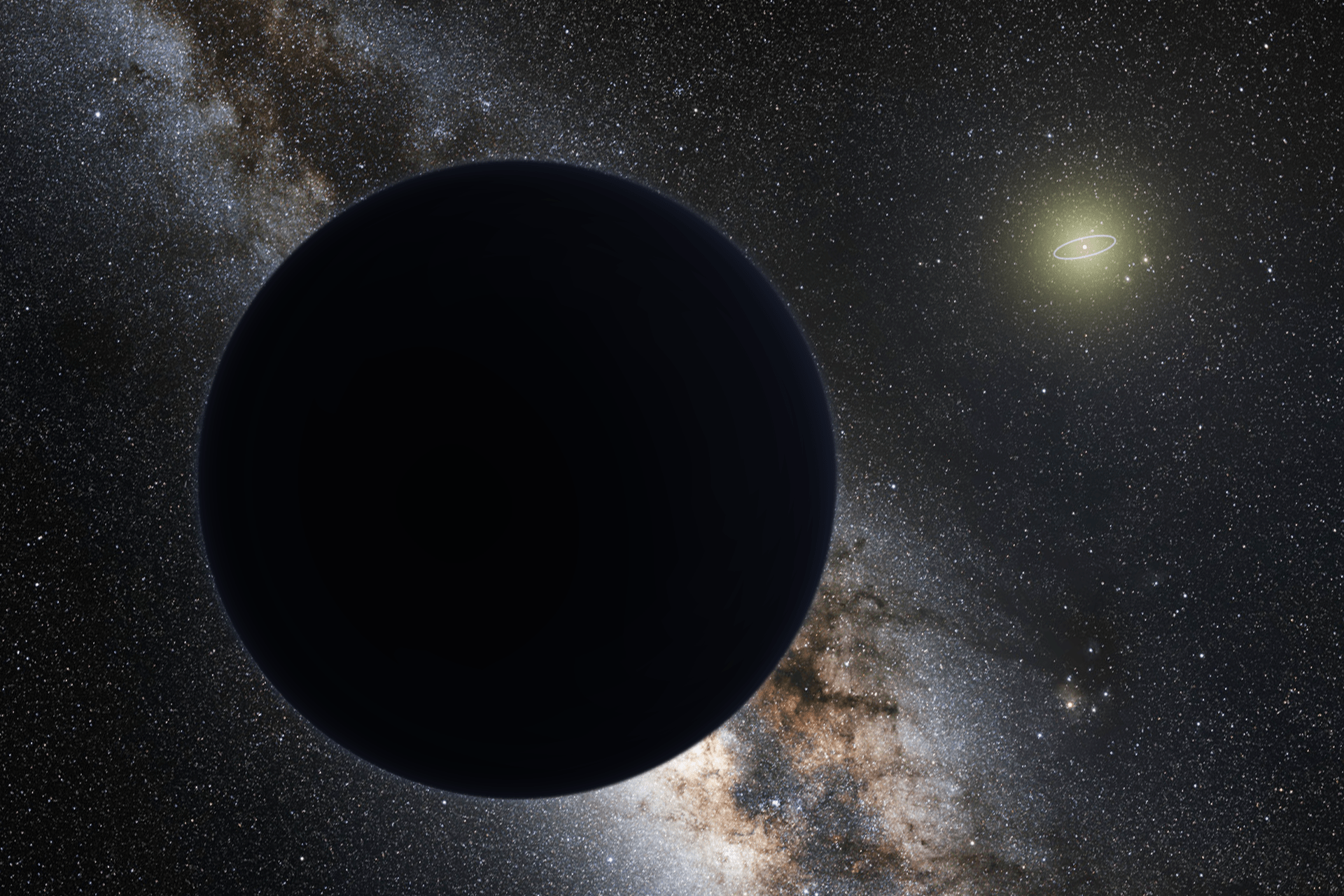Planet 9 cannot hide forever, and new research has narrowed the range of possible locations further! In
January of 2016
, astronomers Mike Brown and Konstantin Batygin published the first evidence that there might be another planet in our Solar System. Known as "
Planet 9
" ("Planet X" to some), this hypothetical body was believed to orbit at an extreme distance from our Sun, as evidenced by the orbits of certain extreme
Kuiper Belt Objects
(eKBOs).
Since that time, multiple studied have been produced that have attempted to place constraints on Planet 9's location. The
latest study
once again comes from Brown and Batygin, who conducted an analytical assessment of all the processes that have indicated the presence of Planet 9 so far. Taken together, these indications show that the existence of this body is not only likely, but also essential to the Solar System as we know it.
The study, titled "
Dynamical Evolution Induced by Planet Nine
", recently appeared online and has been accepted for publication in
The Astronomical Journal
. Whereas previous studies have pointed to the behavior of various populations of KBOs as proof of Planet 9, Brown and Batygin sought to provide a coherent theoretical description of the dynamical mechanisms responsible for these effects.
In the end, they concluded that it would be more difficult to imagine a Solar System without a Planet 9 than with one. As Konstantin Batygin explained in a recent NASA
press statement
:
In 2016, Brown and Batygin described the first three lines of observational evidence for Planet 9. These include
six extreme Kuiper Belt Objects
which follow highly elliptical paths around the Sun, which are indicative of an unseen mechanism affecting their orbit. Second is the fact that the orbits of these bodies are all tilted the same way - about 30° "downward" to the plane of the Kuiper Belt.
The third hint came in the form of computer simulations that included Planet 9 as part of the Solar System. Based to these simulations, it was apparent that more objects should be tilted with respect to the Solar plane, on the order of about 90 degrees. Thanks to their research, Brown and Batygin found five such objects that happened to fit this orbital pattern, and suspected that more existed.
[caption id="attachment_137423" align="aligncenter" width="580"]
Caltech professor Mike Brown and assistant professor Konstanin Batygin have been working together to investigate Planet Nine. Credit: Lance Hayashida/Caltech[/caption]
Since the publication of the original paper, two more indications have emerged for the existence of Planet 9. Another involved the unexplained orbits of more Kuiper Belt Objects which were found to be orbiting in the opposite direction from everything else in the Solar System. This was a telltale indication that a relatively close body with a powerful gravitational force was affecting their orbits.
And then there was the argument presented in a
second paper
by the team - which was led by Elizabeth Bailey, Batygin's graduate student. This study argued that Planet 9 was responsible for tilting the orbits of the Solar planets over the past 4.5 billion years. This not only provided additional evidence for Planet 9, but also answered a long standing mystery in astrophysics - why the planets are tilted 6 degrees relative to the Sun's equator.
As Batygin
indicated
, all of this adds up to a solid case for the existence of a yet-to-discovered massive planet in the outer Solar System:
[caption id="attachment_126972" align="aligncenter" width="580"]
A predicted consequence of Planet Nine is that a second set of confined objects (represented in blue) should also exist. Credit: Caltech/R. Hurt (IPAC)[/caption]
Recent studies have also shed some light on how and where Planet 9 originated. Whereas some suggested that the planet moved to the edge of the Solar System after forming closer to the Sun, others have suggested that it might be an exoplanet that was captured early in the Solar System's history. At present, the favored theory appears to be that it
formed closer to the Sun
and migrated outward over time.
Granted, there is not yet a scientific consensus when it comes to Planet 9 and other astronomers have offered other possible explanations for the evidence cited by Batygin and Brown. For instance, a recent analysis based on the
Outer Solar System Origins Survey
- which discovered more than 800 new Trans-Neptunian Objects (TNOs) - suggests that the evidence could also be consistent with a random distribution of such objects.
In the meantime, all that remains is to find direct evidence of the planet. At present, Batygin and Brown are attempting to do just that, using the Subaru Telescope at the
Mauna Kea Observatory
in Hawaii. The detection of this planet will not only settle the matter of whether or not it even exists, it will also help resolve a mystery that emerged in recent years thanks to the discovery of thousands of extra-solar planets.
In short, thanks to the discovery of 3,529 confirmed exoplanets in 2,633 solar systems, astronomers have noticed that statistically, the most likely types of planets are "Super-Earths" and "mini-Neptunes" - i.e. planets that are more massive than Earth but not more than about 10 Earth masses. If Planet 9 is confirmed to exist, which is estimated to have 10 times the Mass of Earth, then it could explain this discrepancy.
Planet 9, we know you're out there and we will find you! Unless you're not, in which case, disregard this message!
Further Reads: NASA
 Universe Today
Universe Today
